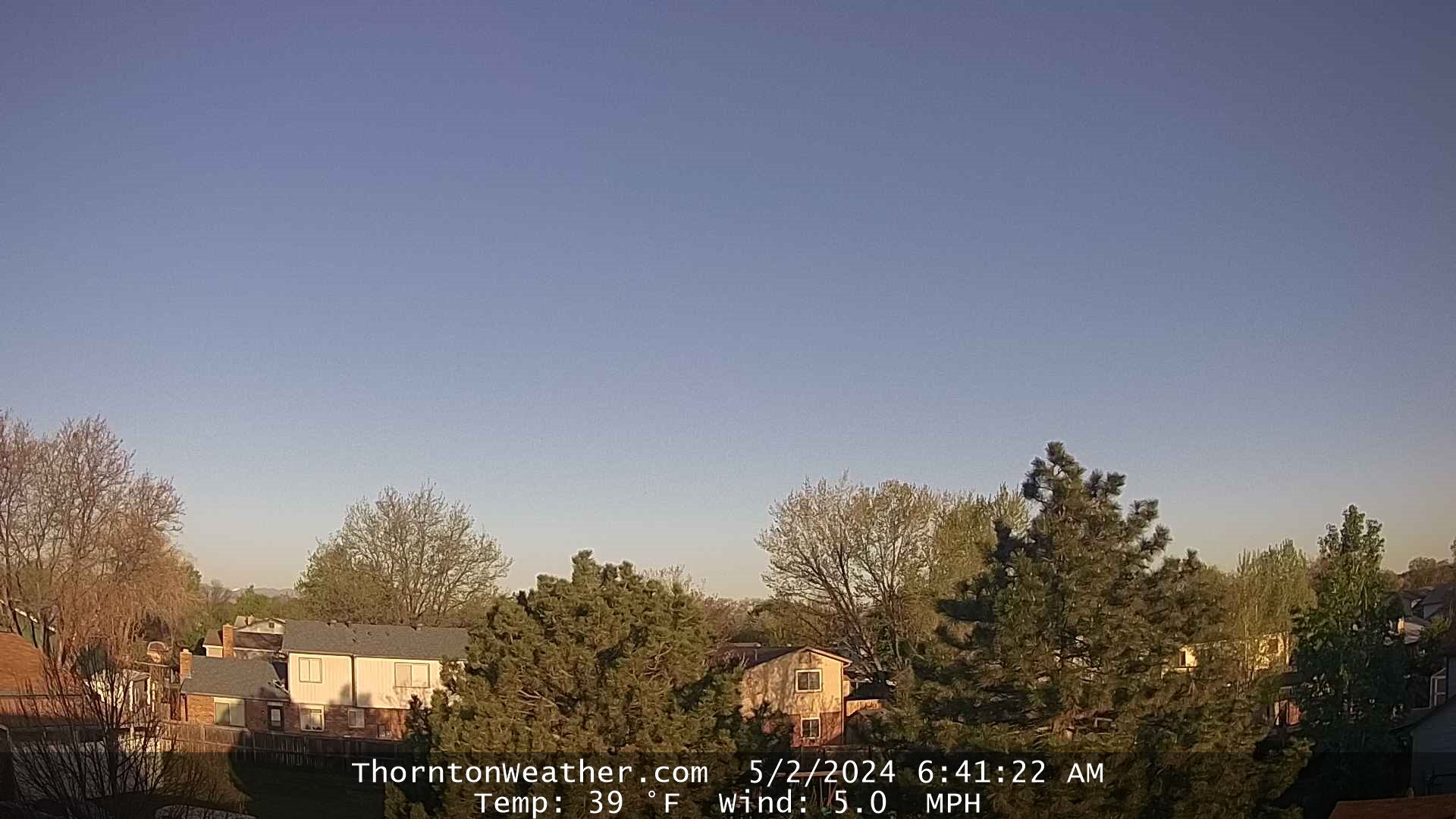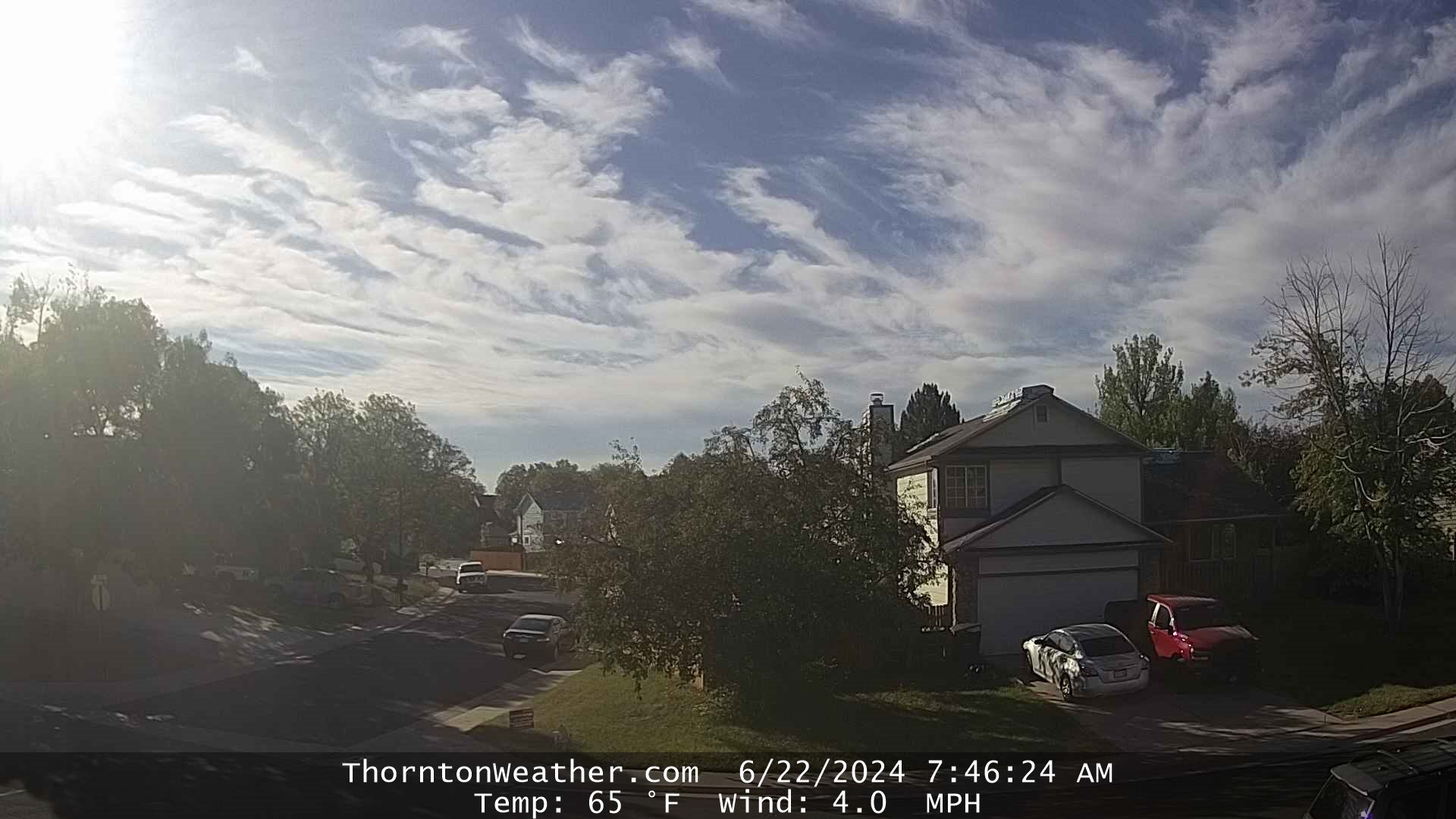Thornton, Colorado Weather Cams
Thornton West cam

Thornton East cam

Thornton, Colorado: From Farmland to “City of Planned Progress” — A History of Growth on the Front Range
Thornton, Colorado Weather Cams. Located just 10 miles north of downtown Denver, Thornton, Colorado, is a city that exemplifies the postwar American dream: a master-planned suburb born from farmland, shaped by innovation, and transformed into one of the fastest-growing communities in the state. Its story is one of vision, resilience, and the dynamic evolution of the Denver metropolitan area.
Before the Boom: Farmland and Frontier Roots
Before Thornton became a city, the land it occupies was part of the vast prairie that stretched across the Front Range. For centuries, the area was home to Indigenous peoples, including the Arapaho and Cheyenne, who hunted bison and followed seasonal migration routes across the plains.
By the late 19th century, the land was settled by Euro-American homesteaders who established farms and ranches. The fertile soil and proximity to Denver made it ideal for agriculture, and the area remained largely rural well into the 20th century.
A Vision Takes Shape: The Birth of Thornton
Thornton’s transformation began in 1952, when developer Sam Hoffman purchased 400 acres of farmland just north of Denver. Inspired by the postwar housing boom and the promise of the GI Bill, Hoffman envisioned a fully planned suburban community that would offer affordable homes and modern amenities to returning veterans and their families.
Construction began in 1953, and the first three homes were completed that same year. The community was named “Thornton” in honor of then-Colorado Governor Dan Thornton, a rancher and advocate for growth and development.
What set Thornton apart was its planning. It was the first community in Adams County to offer full municipal services—including water, sewer, parks, and trash collection—funded by a single tax levy. This model of integrated services and infrastructure earned Thornton the nickname “The City of Planned Progress.”
Incorporation and Early Growth
By the end of 1955, Thornton had over 1,200 homes and a population of 5,500. The Thornton Community Association (TCA), formed in 1954, played a key role in guiding the town’s development and advocating for incorporation. On May 26, 1956, Thornton was officially incorporated as a city, and Oyer G. Leary was elected its first mayor.
The city’s early years were marked by rapid growth and civic engagement. Schools, churches, and shopping centers sprang up to serve the growing population. In 1967, Thornton adopted a Home Rule Charter, giving it greater autonomy in governance and planning.
Suburban Expansion and Regional Integration
Thornton’s location along Interstate 25 and its proximity to Denver made it an attractive destination for families and businesses. Throughout the 1970s and ’80s, the city expanded steadily, annexing land and developing new neighborhoods. By 1980, the population had surpassed 42,000—a tenfold increase from its founding.
The city’s growth mirrored broader trends in the Denver metro area, as suburban communities expanded outward from the urban core. Thornton became part of the Denver–Aurora–Lakewood Metropolitan Statistical Area and played a key role in shaping the northern corridor of the Front Range.
Trials and Triumphs: The 1981 Tornado
One of the most dramatic events in Thornton’s history occurred on June 3, 1981, when a powerful tornado tore through the city, destroying 87 homes and damaging hundreds more. The storm left a lasting impact on the community, but also showcased its resilience. Recovery efforts were swift, and the city emerged stronger, with improved emergency planning and infrastructure.
Modern Growth and Development
In the 1990s and 2000s, Thornton experienced another wave of expansion. New residential developments, retail centers, and business parks transformed the city into a major economic hub. The Denver Premium Outlets, Topgolf, and other high-profile projects brought jobs and visitors to the area.
Thornton also invested heavily in parks and recreation. Today, the city boasts nearly 1,000 acres of developed parkland, multiple recreation centers, and a growing network of trails and open spaces. The Margaret W. Carpenter Recreation Center and Trail Winds Recreation Center are popular community hubs.
Connectivity and the N Line
A major milestone in regional integration came in 2020 with the opening of the Regional Transportation District’s (RTD) N Line commuter rail. The line connects Thornton to downtown Denver, offering a fast and sustainable transit option for commuters. Transit-oriented development around the stations is helping to shape the city’s future growth.
Diversity and Community
Thornton is now the sixth-largest city in Colorado, with a population of over 140,000. It is one of the most diverse cities in the state, with a rich mix of cultures, languages, and traditions. The city’s Community Connections division provides vital services to residents, including housing assistance, food access, and mental health support.
Thornton’s commitment to inclusivity is reflected in its cultural programming, public art initiatives, and multilingual outreach. Events like Thorntonfest and the Harvest Fest bring residents together to celebrate the city’s vibrant identity.
The Surrounding Area: Adams and Weld Counties
Thornton spans both Adams and Weld counties, placing it at the crossroads of urban and rural Colorado. To the south and west lie the established suburbs of Northglenn and Westminster; to the north and east, open farmland and rapidly developing communities like Brighton and Erie.
This position gives Thornton a unique role in regional planning and environmental stewardship. The city is actively involved in water conservation, smart growth initiatives, and efforts to preserve open space amid rapid development.
Conclusion: A City Still in Motion
From its origins as a postwar housing experiment to its status as a dynamic suburban city, Thornton’s history is a testament to vision, adaptability, and community spirit. It’s a place where planning meets progress, where families put down roots, and where the future is always in motion.
As Thornton continues to grow—projected to reach over 240,000 residents by 2065—it remains committed to the values that shaped its founding: innovation, inclusivity, and a deep sense of place on Colorado’s ever-evolving Front Range.
For more information, visit the Thornton, Colorado official website.
